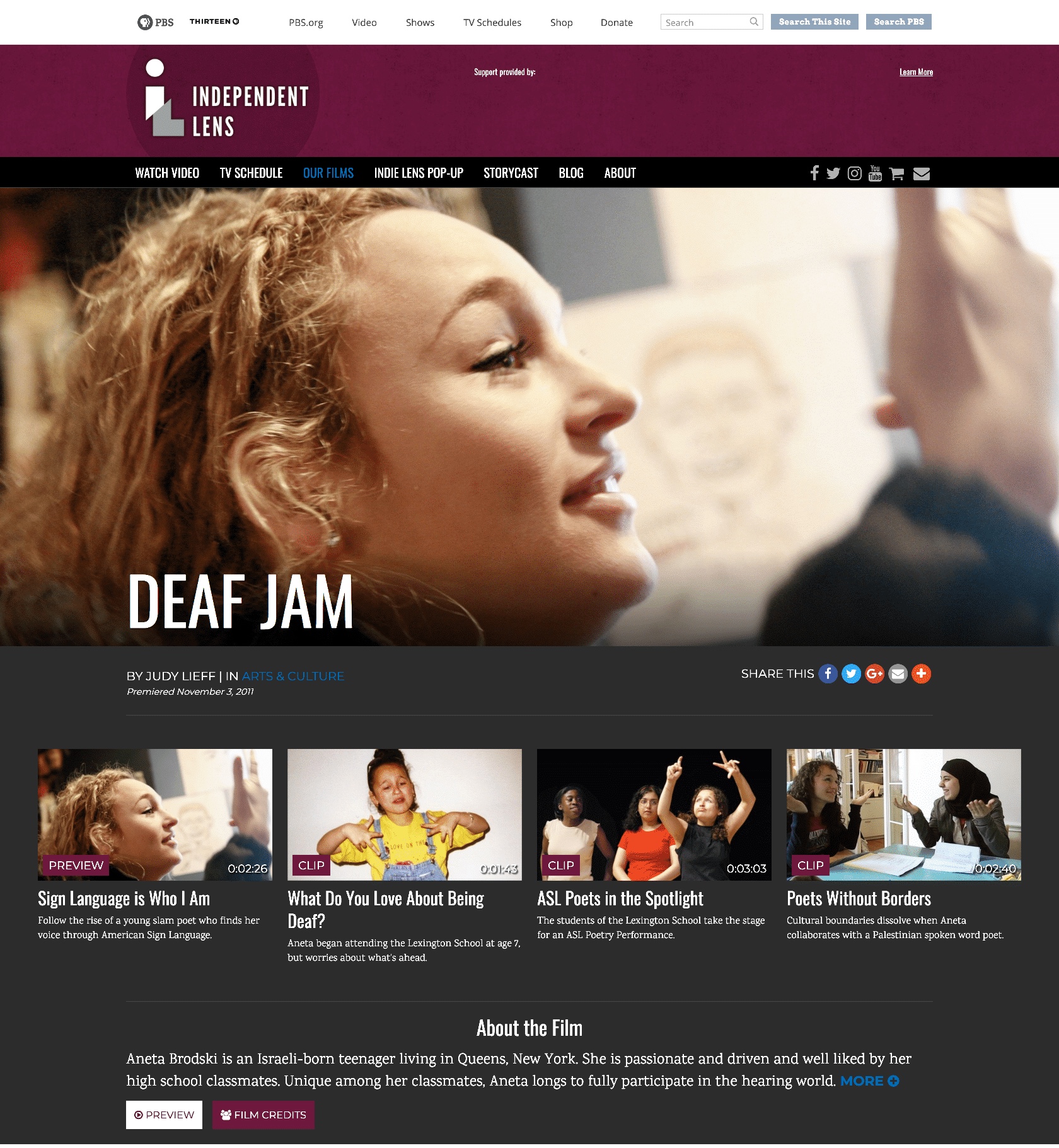UP FOR DEBATE
2019 - Present, documentary series in development
2020 Recipient of The NYC Women’s Fund for Media, Music, and Theater ( ↗ Variety )
2019 IFP Film Week Spotlight on Docs
2018 DocNYC - Only in New York works-in-progress
2020 Recipient of The NYC Women’s Fund for Media, Music, and Theater ( ↗ Variety )
2019 IFP Film Week Spotlight on Docs
2018 DocNYC - Only in New York works-in-progress
Up For Debate - splash reel 9.11.19
N.Y.C. teens fully "woke" to broken politics model hope as they debate hot-button topics inside the largest urban debate league in the U.S - The New York City Urban Debate League (NYCUDL)
Industry Showcases
2019 IFP Film Week Spotlight on Docs
2018 DocNYC - Only in New York works-in-progress
 Brookyln Tech Students
Brookyln Tech Students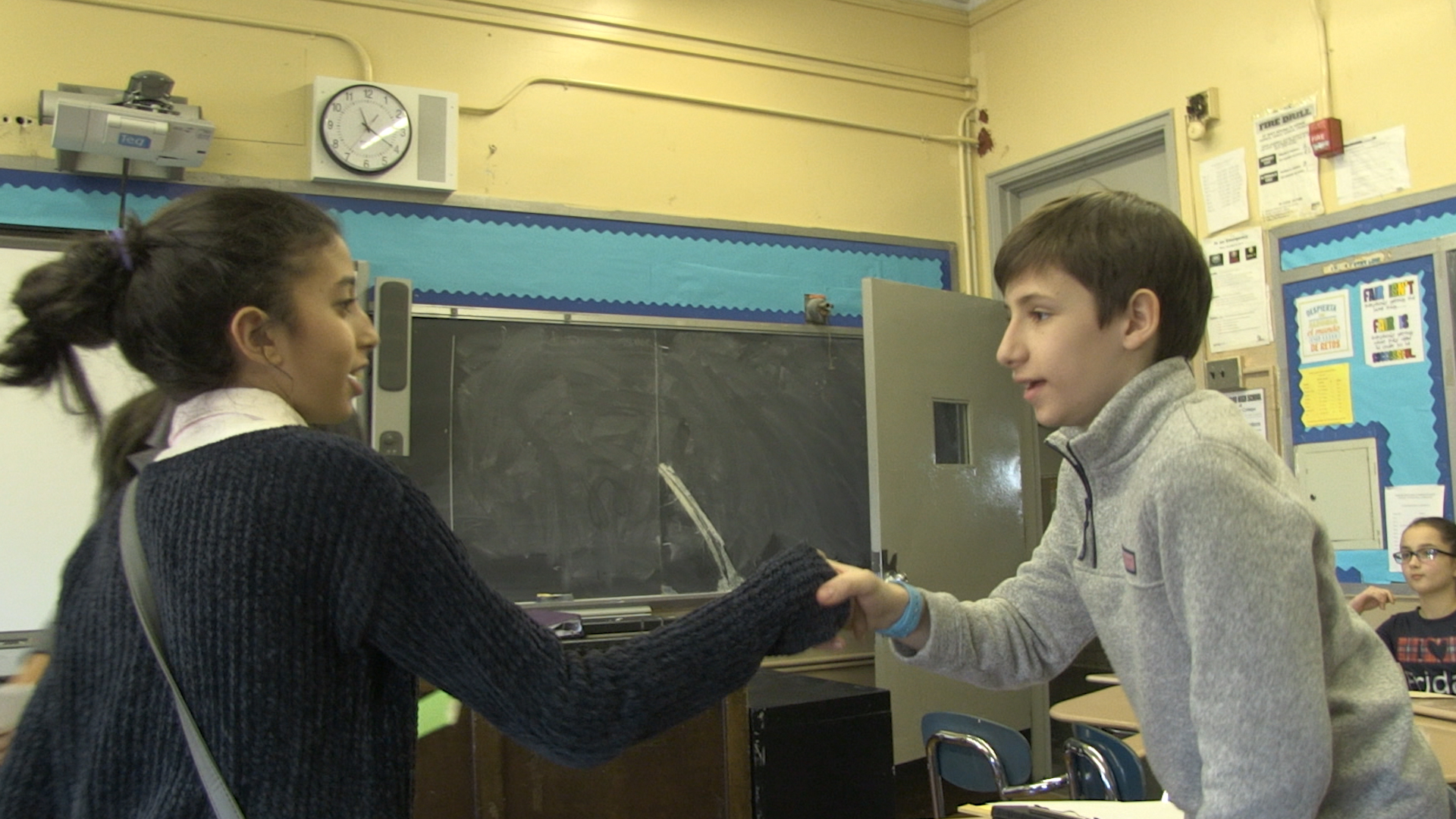
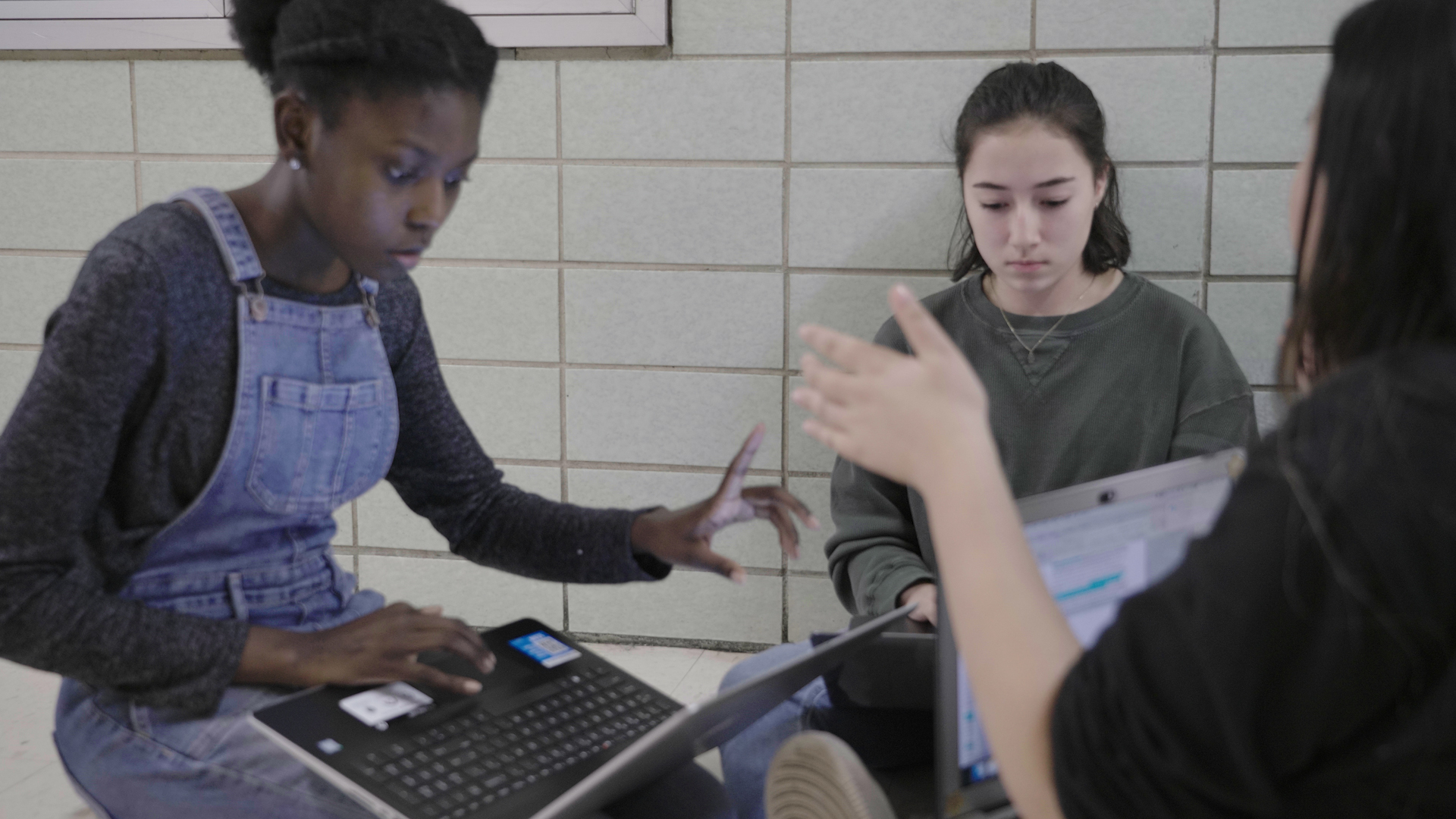
Brooklyn Tech Students
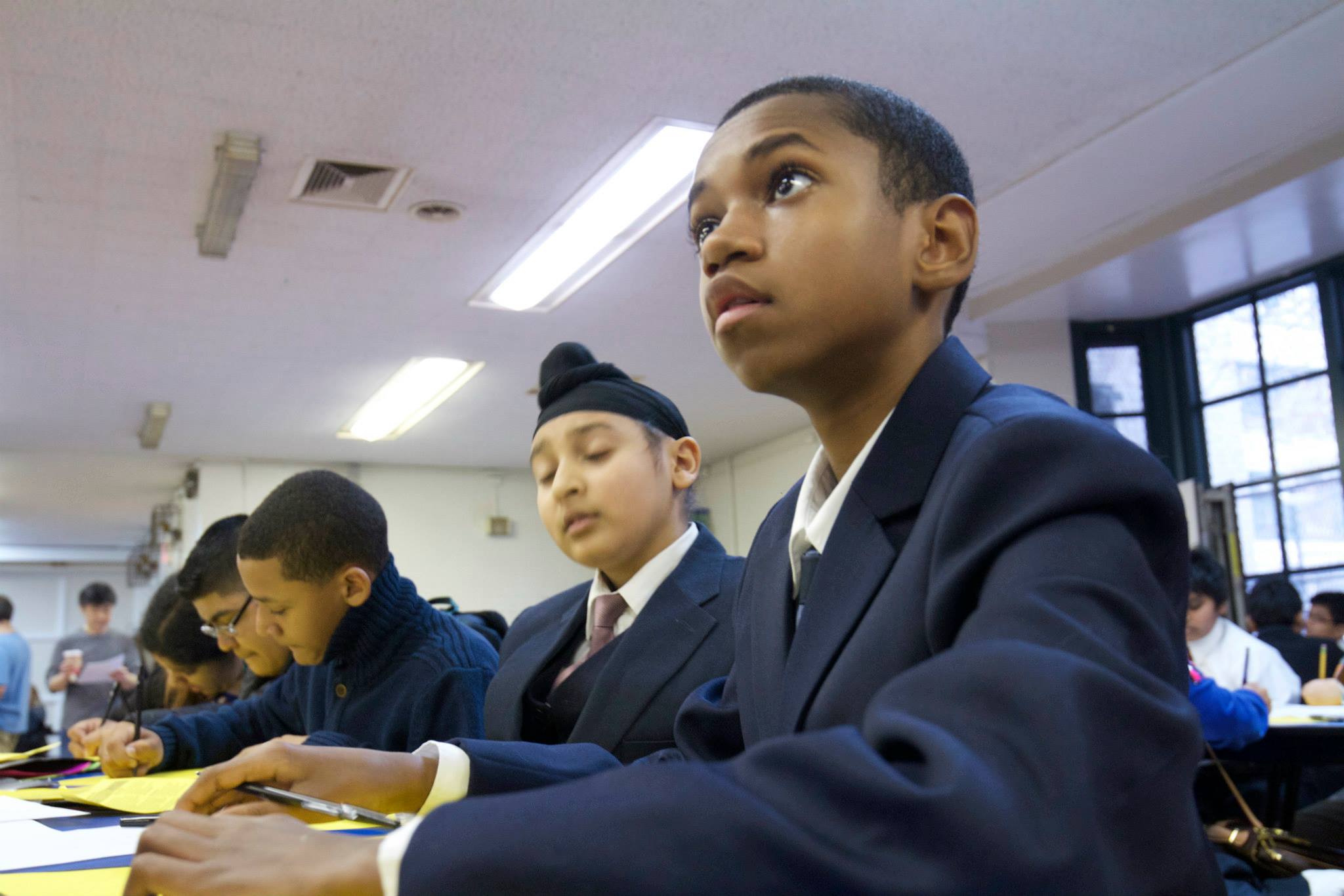
P.S. 161 Students
Collaborators
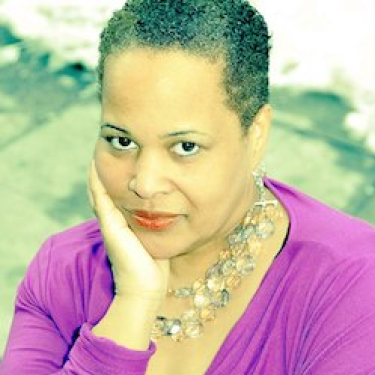
Ann Bennett, Consulting Producer
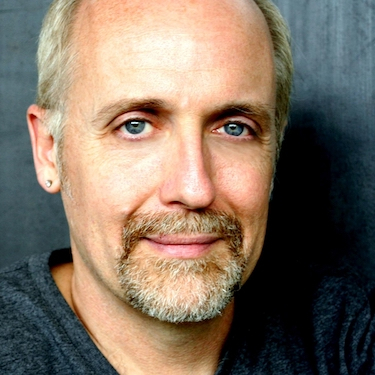
Bill Tunnicliffe, DP, Co-Director
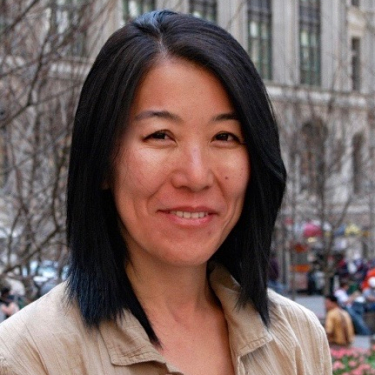
Keiko Deguchi, Editor
︎
Modeling a brighter future for us all, "Up For Debate" goes behind the scenes of cash-strapped N.Y.C. Urban Debate League (NYCUDL) after-school programs to show teens reaping the rewards of debate training. From thoroughly researching their arguments and learning to flip from one diametrically opposed point of view to another, these talented teens gradually build the acumen to advance and compete. They argue with fire and passion, but they are always civil. They are always listening and they are always respectful because that is how they will win.
Pitch Deck available upon request
Email us @ madebyhandllc@gmail.com
By No Means Delicate
2017 fall - present, in development“a very small woman, not so much of the sylph variety but rather a firecracker, full of va-va-voom and oomph.”
- Nancy Dalva
- Nancy Dalva
Mary Cochran - BY NO MEANS DELICATE (in development)
Short documentary on the life of Mary Cochran(1963–2017).
Mary Cochran was a brilliant and transformative once-in-a-generation performing artist, who literally lit up the stage dancing with the Paul Taylor Dance Company for twelve years and then transformed the dance department at Barnard College as Chair for 13 years.
Mary Cochran was a brilliant and transformative once-in-a-generation performing artist, who literally lit up the stage dancing with the Paul Taylor Dance Company for twelve years and then transformed the dance department at Barnard College as Chair for 13 years.
“Dance first and ask questions later” was her message to students, who she connected with professional opportunities that she initiated for them while they earned their degrees. Cochran was a superstar in a world not given to kind of celebrity associated with popular culture.
By No Means Delicate celebrates the triumphs of Mary’s spirit and puts a lens on a complex persona. The film will reveal the psychology of dancers and the community that shaped Mary.

Role: Director/Producer
Co-Producer: Steve Zeitlin, City Lore
Cinematographers: Claudia Raschke, Melissa Donovan
Editor: Keiko Deguchi
Broadcast premiere - PBS series, Independent Lens
RT: 70min and 53 min.
Educational Distribution: New Day Films
Japan Prize NHK broadcasting
Translations: Japanese, Spanish, French, German, Swedish, Korean, Turkish and Taiwanese
Deaf Jam is the story of deaf teen Aneta Brodski’s bold journey into the spoken word slam scene. In a wondrous twist, Aneta, an Israeli immigrant living in the Queens section of New York City, eventually meets Tahani, a hearing Palestinian slam poet. The two women embark on a collaboration/performance duet creating a new form of slam poetry that speaks to both the hearing and the Deaf.
"Delightful and endearing, utilizing upbeat music and clever graphics, Deaf Jam immerses us in the richness and complexity of deaf culture and gives us a unique perspective into a world so vibrant, so diverse, it may forever change the way we see the non-hearing.”

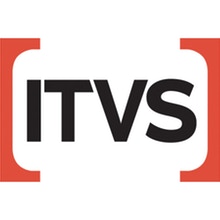






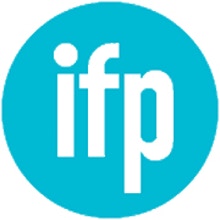





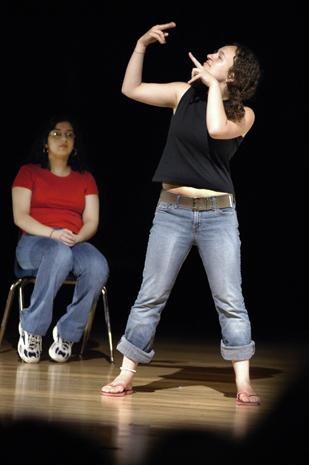
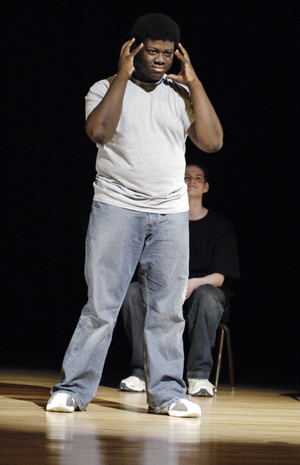
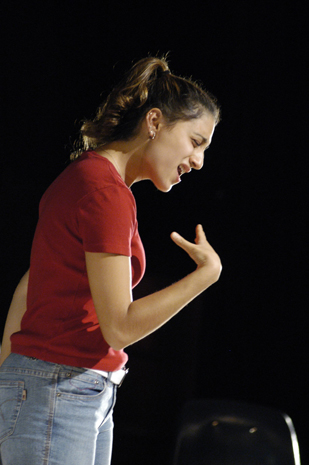
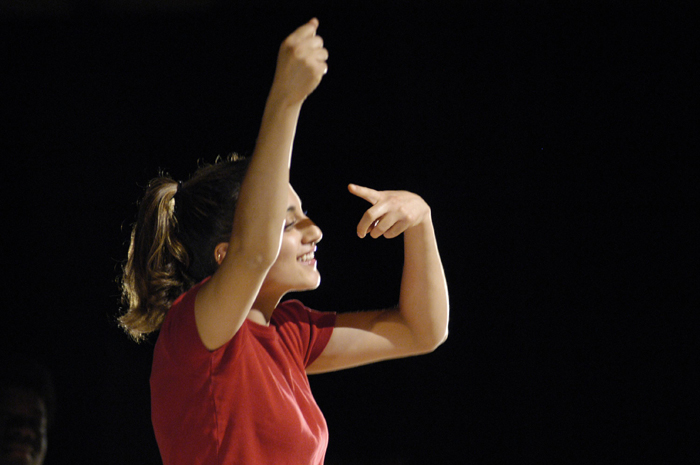


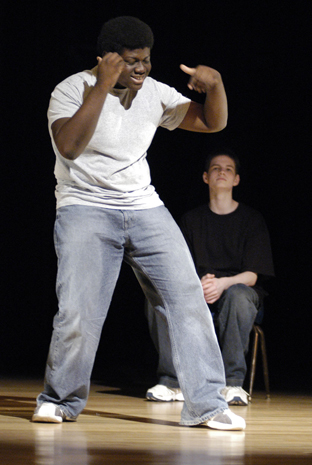
Deaf History (#ASL) Timeline
- for more information: Gallaudet University Archives
384-322B.C. Ancient Greeks Deny Deaf Education |
A.D. 345-550 Early Christians See Deafness as Sin |
1500's Deaf Education Develops |
1620 |
1760 French Sign Language Established |
1760 |
1788 |
1817- First American School for the Deaf Founded |
1818 |
1820 |
1823 |
1837 |
1839 |
1847 |
1850's A Deaf State Is Proposed |
1864 |
1867 Lexington School opens in NYC |
1870's Alexander Graham Bell Promotes Deaf Education |
1876 Alexander Graham Bell invents the telephone |
1880 The Conference of Milan Endorses Oral Education |
1890 |
1880's-1920's Deaf Players Change Baseball and Football |
1892 Electrical Hearing Aid Invented |
1894 |
1901 |
1909 |
1910's-1950's Deaf Employment Skyrockets |
1957 |
1958 |
1960 |
1964 Phone for Deaf Invented |
1964 Oral Deaf Education Labeled 'Failure' |
1966 |
1970's Total Communication Leads to Mainstreaming |
1972 Program Captioning Introduced |
1973 Disabled Gain Right to Equal Access |
1975 |
1984 |
1985 Cochlear Implants Approved |
1986 |
1987 Deaf Actress Wins Oscar |
1988 Deaf President Now' Protest Held |
1990 Americans with Disabilities Act Passed |
1990 Deaf Schools Termed 'Restrictive' |
1992 |
1993 |
1995 First Deaf Miss America Crowned |
2003 |
2004 |
2006 |
|
The philosopher Aristotle claims that "Deaf people could not be educated [since] without hearing, people could not learn." |
St. Augustine tells early Christians that deaf children are a sign of God's anger at the sins of their parents. Meanwhile, Benedictine monks take vows of silence to better honor God. To communicate necessary information, they develop their own form of sign language. |
The physician Geronimo Cardano of Padua, Italy, attempts to teach his deaf son using a code of symbols. Pedro Ponce de Leon, a Benedictine monk, successfully teaches speech to people deaf since birth. |
Juan Pablo Bonet, an advocate of early sign language, writes the first well-known book of manual alphabetic signs for the deaf in 1620. |
A French priest, Charles Michel De L'Eppe, establishes the first free public school for the deaf in France. De L'Eppe tries to develop a bridge between the deaf and hearing worlds through a system of standardized signs and finger spelling. |
At the same time, oral educators make strides in Spain, Germany, France, Holland and England. Among the most successful oral teachers of the deaf is Samuel Heinicke, a German educator. Heinicke teaches pupils speech by having them feel his throat while he speaks; his techniques are called "the German Method." |
Charles Michel De L’Eppe publishes a dictionary of French sign language. |
Thomas Hopkins Gallaudet, an American interested in deaf education, travels to Europe where he meets the Archbishop Roche Sicard, the author of "Theory of Signs,” and successor to De L’Eppe. Sicard sends one of his instructors, Laurent Clerc, and the pair found the American School for the Deaf in Hartford, Connecticut. |
The New York Institution for the Instruction of the Deaf and Dumb is founded. |
Pennsylvania School for the Deaf is founded. |
Kentucky School for the Deaf, the first school supported by the state, opens. |
In St. Louis, Missouri, St. Joseph's the first Catholic school for the deaf, opens. |
The Virginia School for the Deaf and Blind opens. It is the first school to integrate deaf and blind students. |
American Annals of the Deaf first proposes the idea of higher education for the Deaf. |
John Flournoy, proposes to Congress that land be set aside in the western territories for the creation of a deaf state, where deaf people could better enjoy their own community and flourish unrestrained by prejudice and the restrictive good intentions of hearing society. |
The Enabling Act is signed by President Abraham Lincoln and Gallaudet College Opens. Abraham Lincoln signs the charter for the Washington, D.C.- based college for the deaf. Originally known as the National College for the Deaf and Dumb, it is the only accredited facility for the Deaf in the United States to offer college degrees. Today, Gallaudet remains a leader in higher education for the Deaf. |
Lexington School becomes the first pure oral school in the country. Clarke school soon follows in Northhampton, MA. |
Telephone inventor Bell, whose mother was hard of hearing and whose father spent much of his life promoting a defunct teaching method for the deaf called "visible speech," begins his career as a deaf educator. In 1872, he opens a school in Boston that concentrates on oral methods of instruction for teachers of the deaf. |
Armed with wealth and enormous recognition, Bell goes on to found the Volta Bureau to promote oral- based education for deaf children. A period of upheaval in deaf education begins with a backlash against sign language. |
In a move with repercussions well into the future, this international gathering of deaf educators pronounces oral education methods superior to manual communications systems. The American Delegation expresses the only opposition to the vote. Manual education had made great strides in the United States at that time. |
The National Association of the Deaf (NAD) is founded and gains support in reaction to the Milan resolution. |
In 1901, baseball's American League gets its first grand slam thanks to William "Dummy" Hoy, a deaf player. Umpire hand signals are developed so that Hoy can see a strike call from the outfield. In the 1920s, Gallaudet University's football team keeps its plays a secret by hiding signed instructions in a huddle formation. |
While early hearing aids are not easy to use (most weigh several pounds and must be placed on a desk), the carbon-based microphones, powered by large three-and six-volt batteries, give hearing-impaired people truly amplified sound for the first time. |
The National Deaf Mute College is renamed as Gallaudet College in honor of Thomas H. Gallaudet, it’s first President. |
The First Electric Hearing Aid (radio aid) is Developed. |
William Howard Taft overturns Roosevelt's earlier decision to prohibit deaf people from taking civil service exams for federal jobs. |
During World War I and II the Deaf are not allowed to serve in the U.S. military. Many take manufacturing jobs and new deaf communities flourish. In Europe, the Deaf are allowed to serve. In the field, commands are given using special signs that can be seen at a distance. |
Ida Wynette Gray Hampton is the first African- American woman to graduate from Gallaudet College. |
President Dwight Eisenhower signs PL 85-905 establishing Captioned films for the Deaf. |
Stokoe publishes his findings about sign language as a legitimate language. In 1965 a Dictionary of ASL on Linguistic Principles is published. Pilgrim Imagining starts open captioning in the Caption Films for the Deaf Program, under U.S. Department of Health, Education & Welfare. Robin Michelson and colleague Melvin Bartz construct a cochlear device with biocompatible materials that can be implanted in human patients. This system is implanted in 4 patients, and the report of hearing results. |
Phone for Deaf Invented and the National Technical Institute for the Deaf (NTID) is established. Robert Weitbrecht, who is deaf, invents the teletypewriter (TTY), which enables deaf people to use phone lines to call each other and type out their conversations. Located on the campus of the Rochester Institute of Technology, NTID is the first technological college for deaf students in the world. |
Congress issues the Babbidge Report on oral deaf education and concludes that it has been a "dismal failure." |
The National Theater of the Deaf is Established. |
Total Communication, a combination of manual and speech-based instruction for the Deaf is developed and promoted. The Total Communication system becomes the foundation for a new approach to deaf education within public school systems. By 1975, Public Law 94-142, is passed requiring “handicapped” children in the U.S. be provided with free and appropriate education, allowing many to be mainstreamed into regular public schools, where they receive special instruction but interact with the general public school population. |
The Caption Center at WGBH in Boston open captions "The French Chef" the country's first nationally broadcast captioned program. |
The Rehabilitation Act of 1973 includes a section requiring federally funded organizations to provide TTY phones and interpreters for the Deaf. |
On November 29th President Ford signs PL 94-142 into law. The law guarantees each disabled child to receive a free, appropriate public education. |
Allen Ginsberg visits NTID for the Deaf Beat Summit. |
The cochlear implant is approved for clinical trials in people 18 and older. The device is a mechanical prosthesis of sorts for the inner ear. It bypasses the bones of the inner ear, placing electrodes directly into the cochlea, where sound waves are absorbed and interpreted by the auditory nerve. |
Gallaudet becomes a University. |
Marlee Matlin becomes the first deaf actress to win an Academy Award, for her role in the movie "Children of a Lesser God." NTID hosts the first National Deaf Poetry Conference. |
Students and faculty at Gallaudet University protest the selection of another hearing president. After eight days of student protests, I. King Jordan is named the first deaf president of Gallaudet University. Congress recommends that American Sign Language be used as the primary language for the Deaf, with English as a second language. |
Discriminatory practices and obstacles to accessibility for the handicapped are both outlawed. The law has a huge impact on the wheel chair dependent, and also requires greater communications, education, and employment opportunities for the Deaf. |
The 1972 Individuals with Disabilities Education Act (IDEA) is re-adopted and amended to recommend that disabled students should attend schools with the "least restrictive environment." Residential deaf schools are struck a blow as they become labeled the "most restrictive environment." Enrollment plunges, and some schools close their doors. |
President George H.W Bush signs the Americans with Disabilities Act into Law, protecting the right of the disabled to education, employment, accessible buildings, and other reasonable accommodations. |
The FCC requires that all newly manufactured televisions have the caption decoding chip. |
Heather Whitestone, an orally educated deaf woman from Birmingham, Alabama, wins the coveted crown. She states, "[Speech] worked for me, but it does not work for all deaf children. |
The British Government recognizes British Sign Language as a bona-fide language. |
Deaf Jam, a documentary film championing American Sign Language Poetry, begins production. |
There are an estimated 560 million people in the world with a hearing loss. |
|
CLOTHES_
LINES
A public art project in development
Clothes_Line is based on the premise that clothes hanging out to dry in any kind of a landscape or interior environment provide insight into the lives of the people who own that clothing. Clothesline Stories interviews people about their clothes and then displays their stories within a unique and compelling environment.
Clothes_Line is based on the premise that clothes hanging out to dry in any kind of a landscape or interior environment provide insight into the lives of the people who own that clothing. Clothesline Stories interviews people about their clothes and then displays their stories within a unique and compelling environment.
︎︎
Collaborators: Wenqi Li, Gail Bennett, Bill Tunnicliffe
We began our artistic partnership at NYU’s Interactive Telecommunications Program (ITP). Our collective work is at the intersection of storytelling and emerging media. Projects are often infused with playfulness and revolve around human interactions, documentary practices, installation design, and found choreographies in public spaces. We are interested in and committed to immersing people in dynamic environments that result in creative engagement, spontaneous performance, and personal discovery.
We began our artistic partnership at NYU’s Interactive Telecommunications Program (ITP). Our collective work is at the intersection of storytelling and emerging media. Projects are often infused with playfulness and revolve around human interactions, documentary practices, installation design, and found choreographies in public spaces. We are interested in and committed to immersing people in dynamic environments that result in creative engagement, spontaneous performance, and personal discovery.

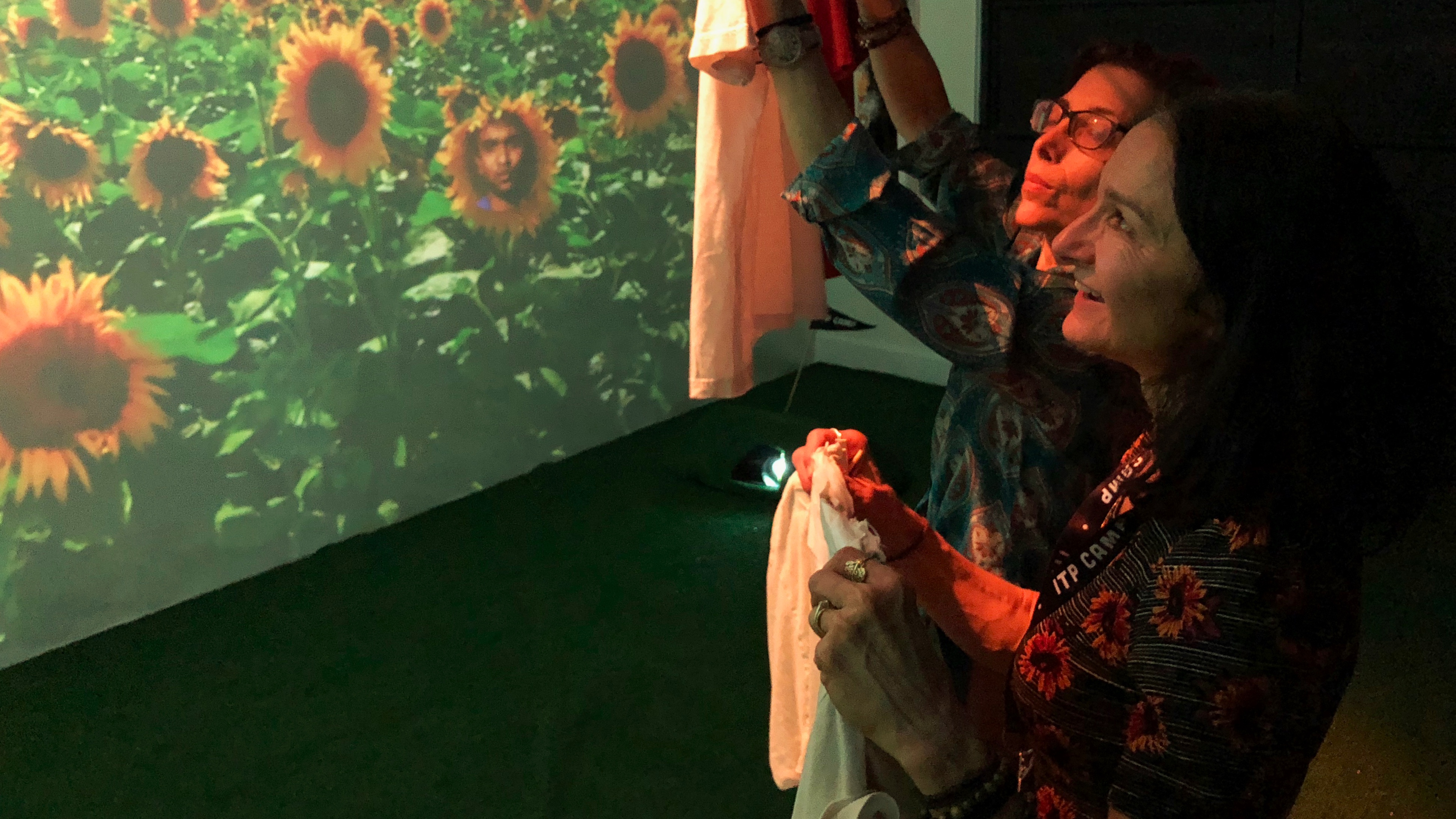
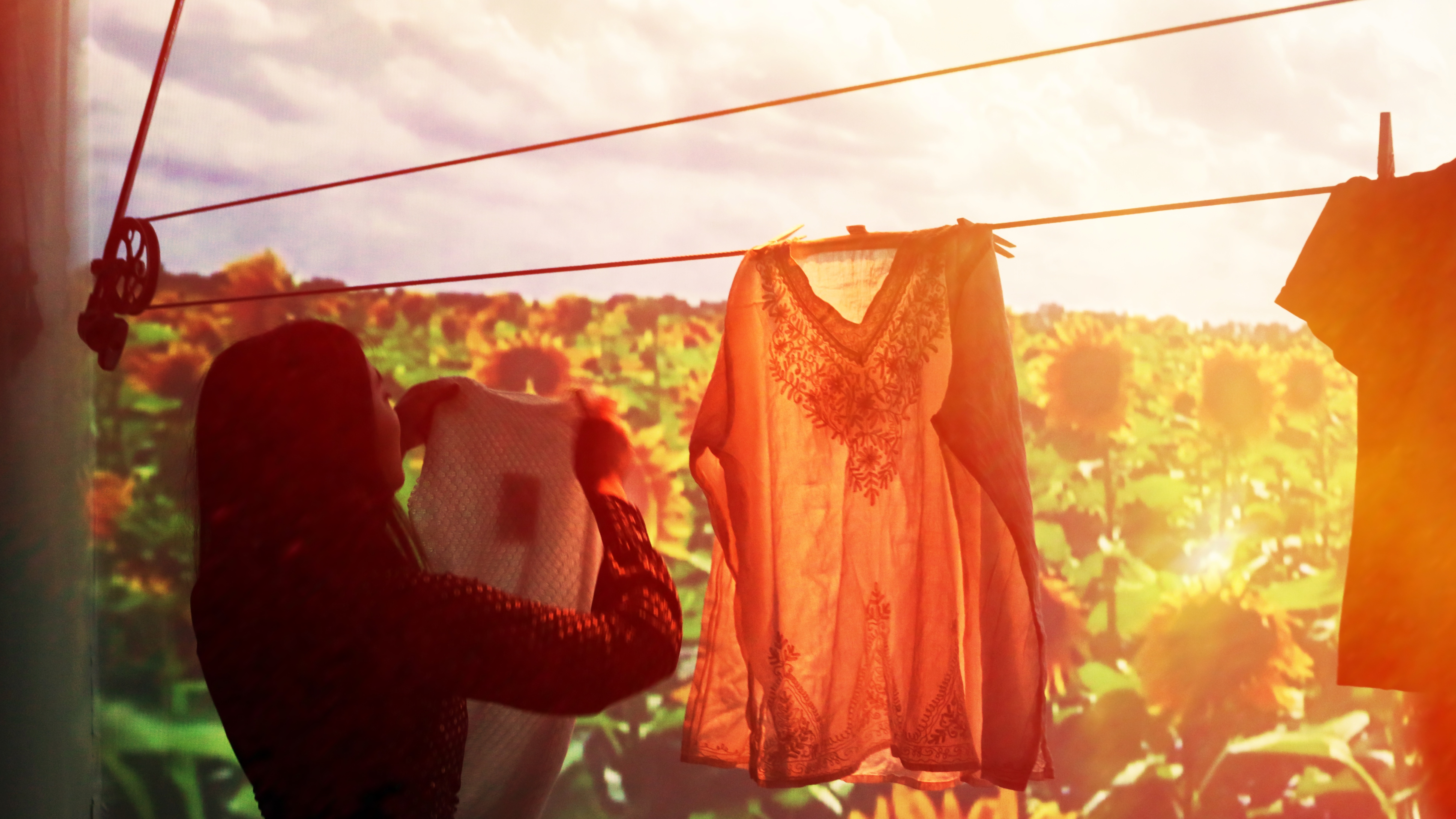
Clothes_Lines was inspired by a discussion we had about the cultural
associations of clotheslines. Whether in India or Singapore, Mexico or
the U.S., as we travelled, we have been fascinated by the endless variety
of colors and types of clotheslines observed. They create persistent
public images of how local residents interact with architectures and
plants, revealing a fact of inhabitation. They are seen as physical natural
boundaries between residential districts and working districts. However,
in the U.S. there are approximately 19 states that have banned exterior
clotheslines. While it's not officially addressed in the Housing and
Maintenance Code in New York City, a license must be purchased before
hanging clothes on a clothesline.
Team member Wenqi grew up in China. In our initial discussions, Wenqi talked about his impressions when he first came to New York City and saw that clotheslines were missing from the landscape. "In China, hanging clothes at the balcony is a very common part of the landscape. You can always tell the history of a district from the presentation of clothes. It could be a big family of three generations living together, or young professionals living together to split the rent. You cannot really tell if a building is residential or commercial. We saw the ritual of hanging out the laundry as a common connection for people of many cultures.”
Clothes_Lines is an immersive and effective way to neutralize our differences while celebrating our similarities through an experience we all have in common - wearing clothes. It also reflects the synthesis of our development as artists, teachers, and parents. This deeply interactive project combines ingredients of documentary filmmaking, set design, community participation, new forms of storytelling, and emerging technology.
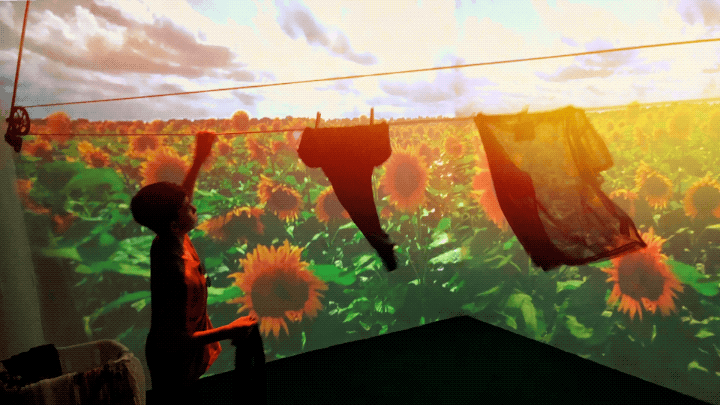
First public exhibition at ITP 2018 Summer Camp Show

